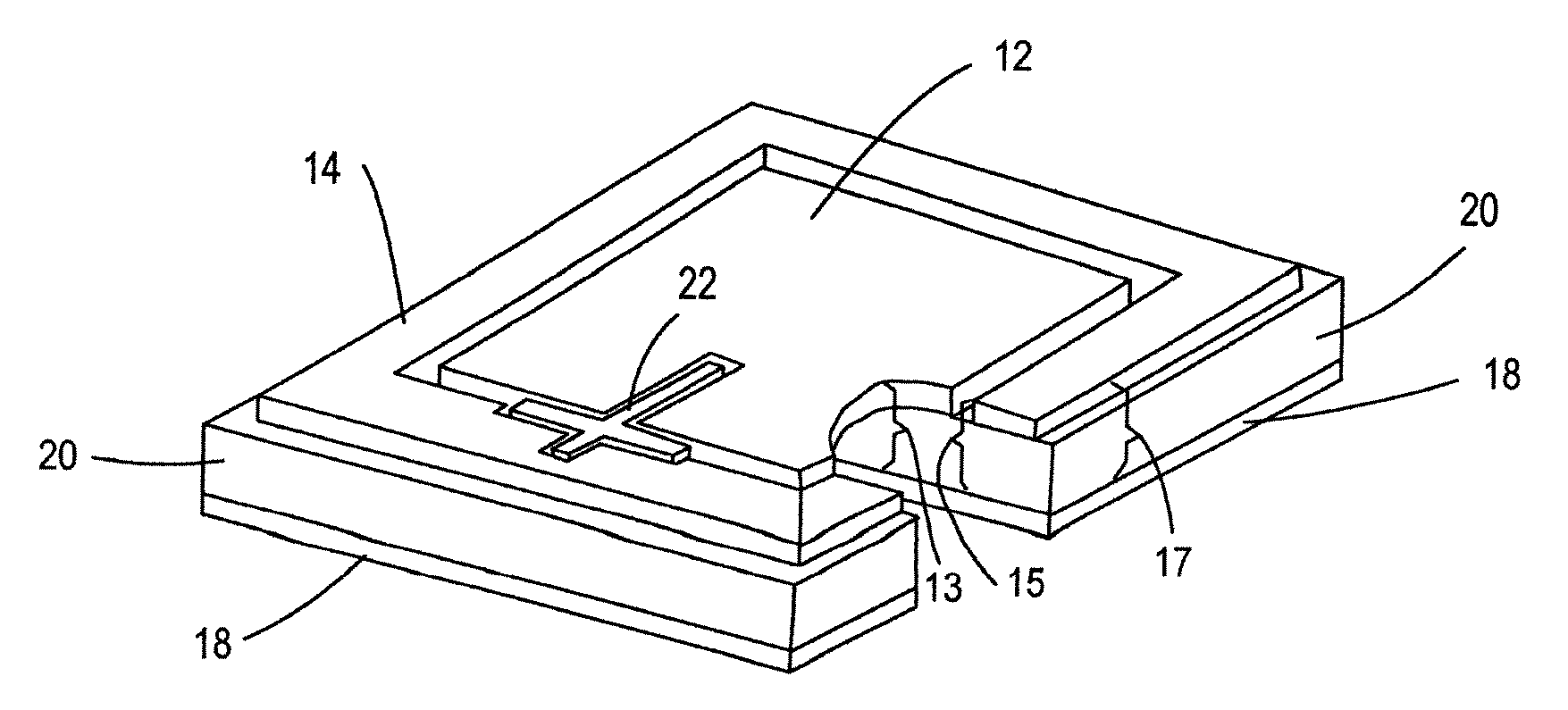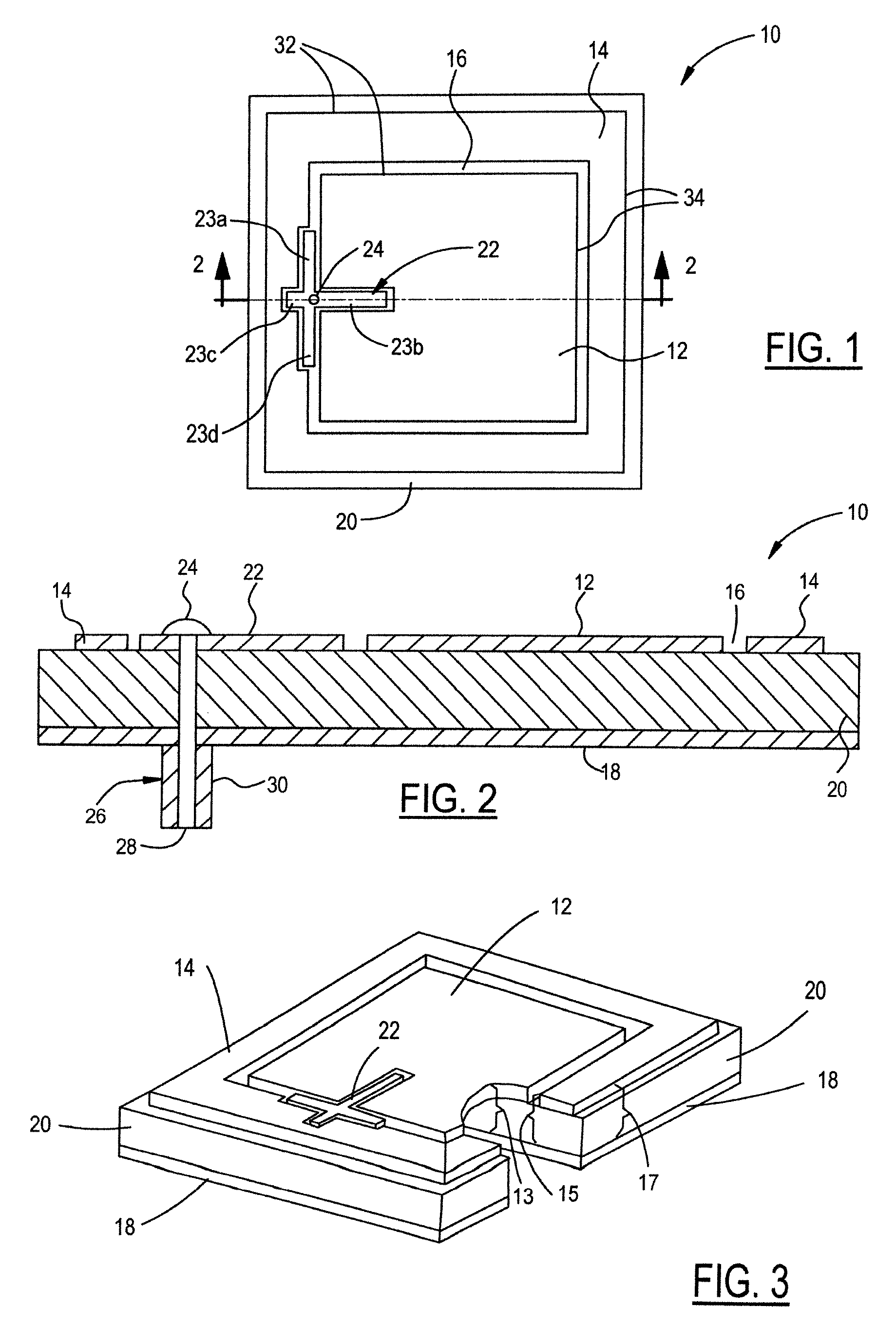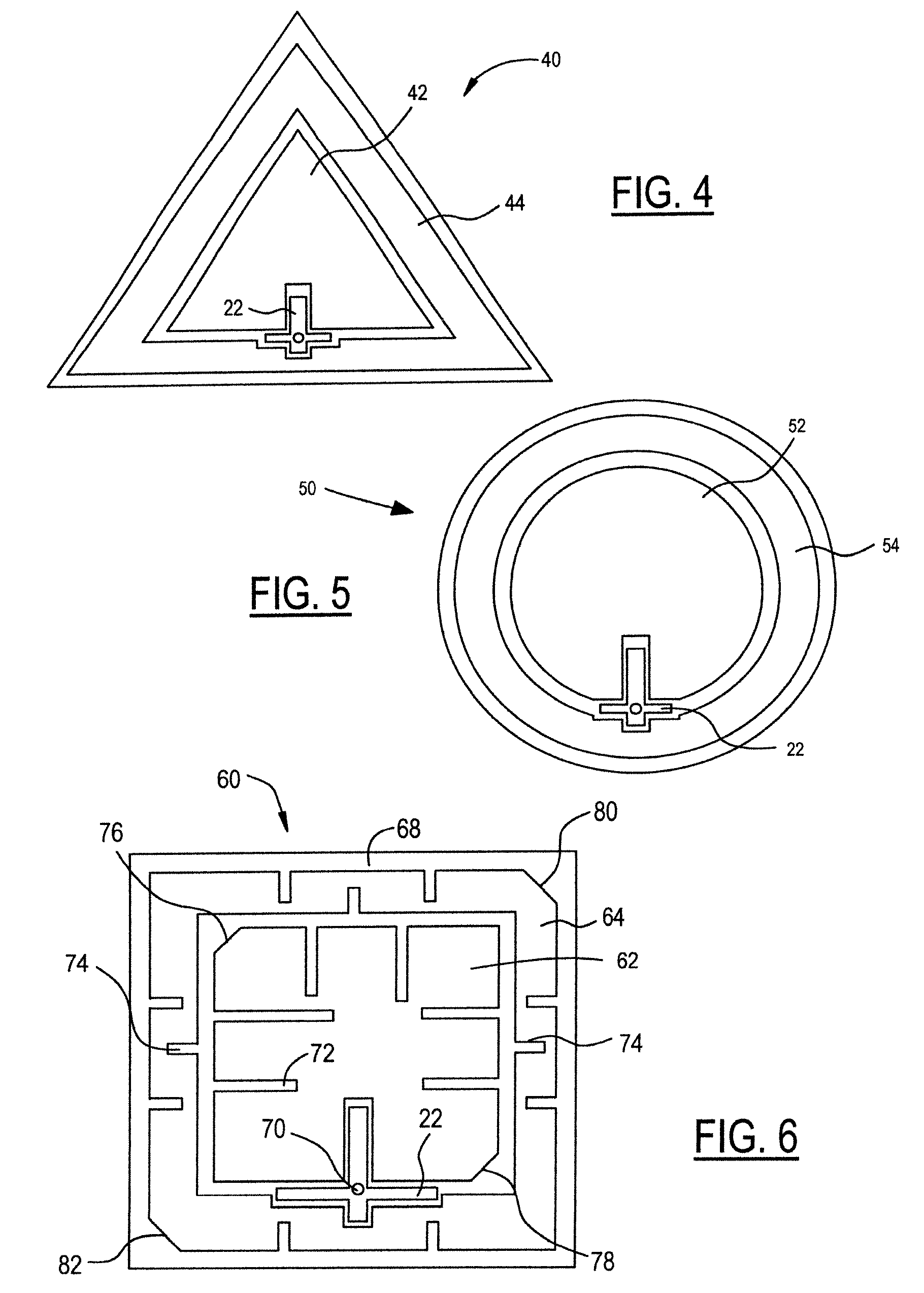Microstrip antenna
a microstrip antenna and antenna technology, applied in the direction of resonant antennas, substantially flat resonant elements, radiating element structural forms, etc., can solve the problems of reducing affecting the performance of stacked patches, and limiting the linear polarization range. , to achieve the effect of improving impedance matching, wide bandwidth, and flexible feed network options
- Summary
- Abstract
- Description
- Claims
- Application Information
AI Technical Summary
Benefits of technology
Problems solved by technology
Method used
Image
Examples
Embodiment Construction
[0026]FIG. 1 is a plane view of one embodiment of a microstrip antenna shown generally at 10 and FIG. 2 is a cross-sectional view of the embodiment in FIG. 1 as taken along the line 2-2 in FIG. 1. Hereinafter, like reference numerals in each of the drawings reflect like elements. The antenna 10 has an inner radiating element 12 and an outer radiating element 14, both are microstrip patch elements. The inner radiating element 12 is nested within and co-planar to the outer radiating element 14. A feed network shown generally at 22 feeds inner and outer radiating elements 12, 14 at a single point by a feed pin 24. The inner and outer radiating elements 12 and 14 are separated from each other by a separation 16, which generally mimics the shape of each of the inner and outer radiating elements 12, 14 and the shape of the feed network 22. Referring to FIG. 2, a conductive ground plane 18 is spaced from the inner and outer radiating elements by a dielectric material 20. The dielectric mat...
PUM
 Login to View More
Login to View More Abstract
Description
Claims
Application Information
 Login to View More
Login to View More - R&D
- Intellectual Property
- Life Sciences
- Materials
- Tech Scout
- Unparalleled Data Quality
- Higher Quality Content
- 60% Fewer Hallucinations
Browse by: Latest US Patents, China's latest patents, Technical Efficacy Thesaurus, Application Domain, Technology Topic, Popular Technical Reports.
© 2025 PatSnap. All rights reserved.Legal|Privacy policy|Modern Slavery Act Transparency Statement|Sitemap|About US| Contact US: help@patsnap.com



